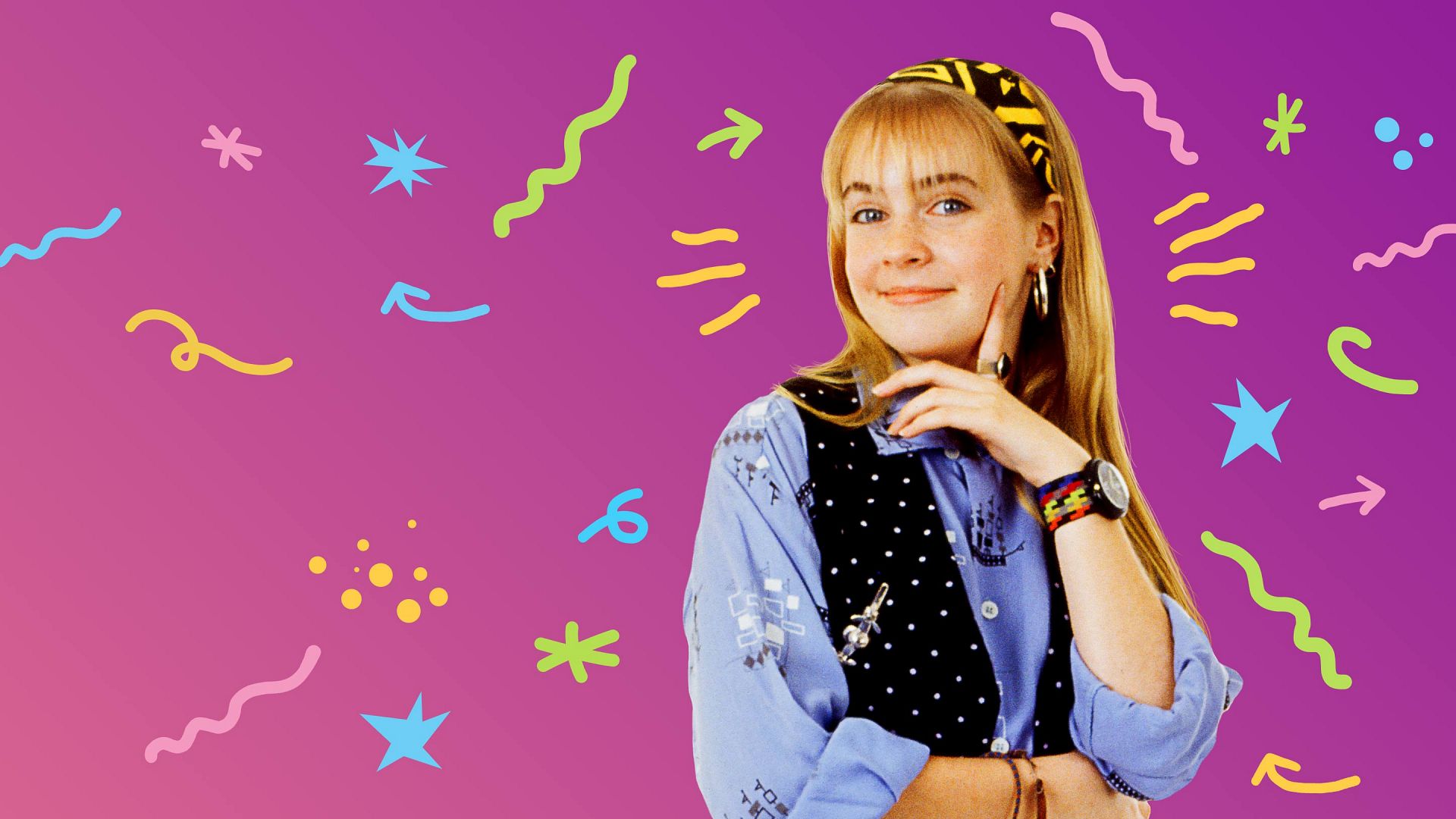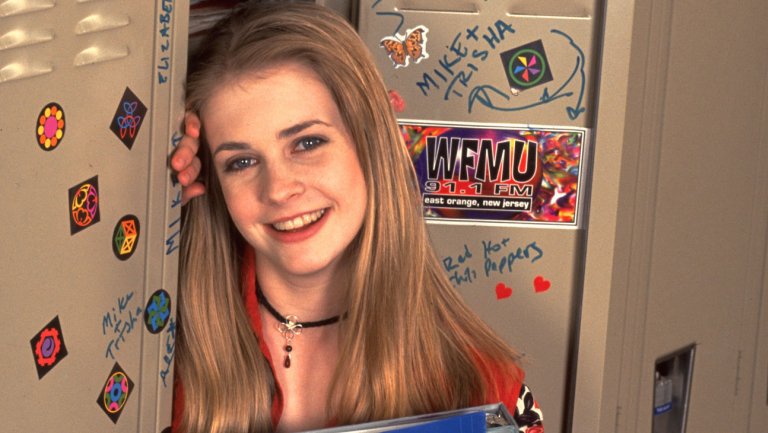Believe it or not, it’s been 30 years since Clarissa Explains It All first aired. For five seasons, Melissa Joan Hart and the rest of the cast would set the standard for Nickelodeon’s programming in the ‘90s and define the entire childhood of a generation now known as millennials.
But while the show might’ve been one of the biggest hits of the now-iconic era for the network, it’s possible that its lasting impact is only just beginning. With several episodes now on Paramount+ (because apparently they’re opposed to putting the entirety of anything on the new streaming service for some unknown reason), new and future generations are likely about to discover Clarissa Darling and her unique takes on the world for the first time.
While the technology in the show may be outdated, a lot of the overarching themes and subject matter are more relevant today than ever. SPIN sat down with show creator Mitchell Kriegman via Zoom to get his take on Clarissa’s legacy and what it all means today.
SPIN: Looking back 30 years later on Clarissa Explains It All, what do you think it is about it that makes it hold up so well?
Mitchell Kriegman: Well, it’s just screaming to be reinterpreted yet again. There are so many things about it that have been either prophetic or just slightly aware of something before other people were aware of it — especially stuff about gender bias and some of the more intuitive parts of it, like the way she talks to the camera. The idea that she would talk to the camera and then be in a scene — where we could put graphics on the screen even as she’s talking to somebody — we can all do that with our phones now. There’s so many aspects of that awareness she had in the way she communicated that are really subtle, but they’re exactly what we do now.
What was it like to be a part of that huge wave of live-action shows that really shaped Nickelodeon in the ‘90s?
Well, Clarissa was kind of the beginning of live-action shows like that, and it was the peak of Nickelodeon. I worked on a lot of the animation too, like Ren and Stimpy, Rugrats, and [Rocco’s Modern Life], and I think Clarissa was really a statement of what Nickelodeon was. It was Nickelodeon’s mission to be inclusive and to the voice of kids — unlike MTV, which was the voice of the music business in a lot of ways. It was more than just regular TV for kids. It was a sort of a stake in who they would be in the future. We had seen a lot of things that were made for kids, and I really wanted to do something that was just authentic for that set of human beings. It wasn’t a show that was talking down in any way, but it was speaking from their point of view.
I think in a lot of ways, you’re not going to quite see something like [that era of Nickelodeon] ever again. I think that something good could happen, but by and large it’s hard to imagine it happening again. That was really the rise of an audience, and streaming doesn’t quite have that kind of energy for kids. I think one of the things that people experience with Clarissa is that it’s not just a show they remember, but it was their childhood.
When you and the cast and crew were working on it, did you know it was going to be something special? How did it feel while you were working on it?
I’m just grateful that I was there in the moment to be able to do it, as I was making a lot of it up as I went along because I just had a bunch of ideas that I wanted to see happen. I was not the most sophisticated kind of conveyor of those ideas at the time, but I got better at it, and it was exciting to be in that moment with all those people working on Nickelodeon.
It was kind of an instant hit — relative to the rest of the business — for a while, and then it kind of went away. I know it was very hard on all of the actors, because it’s not like now where you have social media and you know who your fans are. They did this show, and although it was extremely successful, it wasn’t in a way that they could tangibly feel before the show was over. Some of them dropped out of the business before they realized it was a success. Nickelodeon wouldn’t let us continue doing these episodes while these kids grow up, so they got disconnected from their success. It’s a shame, because it’s not like now, where you do an episode, tweet about it, post about it, and everyone knows about it immediately.
For me, I’ve just always done another show, I just always keep doing shows now. It’s all about what I can do now and what I can do next. It’s definitely one of the things that I’ve worked on that stands out to me, and I’m grateful every time someone remembers the show. When I was a kid, there was this goofy show that was always on called Leave It to Beaver, and I was always hoping that Clarissa could be doing the same — not aesthetically, but functionally. It’s the same kind of show that could be on forever.
Why do you think Clarissa as a character has been more relatable than a lot of the other protagonists of kids shows?
I think one of the things that separated Clarissa from the shows that came after was that Clarissa didn’t want to be a star. She just wanted to be a star in her own life. It was about being yourself. When you read what Miley Cyrus now says about her experience on her show, you know it wasn’t about being yourself. Shows like that were about being some successful, famous something, and I don’t think Clarissa would even take that seriously. I think she was also a little bit like Bugs Bunny in my mind, in that she always had a plan, and if that plan didn’t work, then she had another plan. She never failed, because she always had another way of doing things.
And aside from Clarissa, it always seemed like the supporting characters were all really thought out as well.
It was interesting because when they first tested the pilot, it actually came back that the parents weren’t strong enough. It became an interesting realization that kids don’t want to agree with the parents necessarily, but they want real parents there to bump up against. Clarissa’s parents are pretty goofy, but at the time it was created, people wanted to have parents who were complete goofballs. We made sure they were more substantial after that process, and the actors were terrific. The mom was someone that you felt like “I’d like to know that mom,” as opposed to a kind of June Cleaver that was inaccessible.
Seeing as you wrote the book Things I Can’t Explain as a bit of a sequel to the show, what would you want to see as Clarissa’s lasting legacy at this point?
Well, the thing is that we always need a kid to explain it all, because a kid is in the moment. I mean, Amanda Gorman isn’t a kid — she’s a young adult in her 20s — but she was able to explain things to us. Greta Thunberg explains things to us. There are all of these young figures who explain it to the rest of us, and the older people need that kid and that voice. It could be anybody, but it’s a kid’s voice explaining things that is really compelling. That’s the core essence of Clarissa, and I think it should be back more than ever because they can explain things better than the rest of us. As adults, we’re always remembering what things were. We’re living the way we used to live and trying to keep it together as much as it used to be, and we’re understanding the world through that lens and that filter. Whereas a kid is like “Oh, right now, this is what’s going on.” I’ve done my best to try to listen to that kid anywhere I’ve encountered in my work or in my life with my children, and I’d love to see that kid explaining it all again — and explaining it with the tools that are right now. I think that’s forever. That’s not just a show from the ‘90s.





